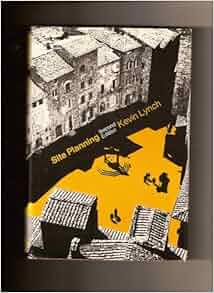Site Planning Kevin Lynch Ebook

The Pillows Download Discography Kat. Site planning kevin lynch • 1. SITE PLANNINGSITE PLANNING SITE PLANNING REVIEW RAP • SITE PLANNINGSITE PLANNING INTRODUCTION Site Planning is defined by Kevin Lynch as “the art of arranging structures on the land and shaping the spaces between; an art linked to architecture, engineering, landscape architecture and city planning.” (Site Planning) Harvey M. Rubenstein defines it as ”the art and science of arranging the uses of portions of land.
These uses are designated in detail by selecting and analyzing sites, forming land use plans, organizing vehicular and pedestrian circulation, developing visual form and materials concepts, readjusting the existing landforms by design grading, providing proper drainage, and developing the construction details necessary to carry out the projects”. (A Guide to Site and Environmental Planning, 1980) SITE PLANNING REVIEW • SITE PLANNINGSITE PLANNING INTRODUCTION In site planning, as in other forms of problem-solving, the critical thinking process of research, analysis and synthesis makes a major contribution to the formation of design decisions. • Research material may be gathered from existing projects, books photographs, or experiments. A program is then formulated and the elements required to develop the project is listed.
• Analysis of the site shall consider all existing features, both natural and man-made in order to determine those inherent qualities that give a site its ‘personality’. A topographical analysis is mandatory. Emphasis should be made on the site’s relationship with the total environment and its special values or potentials. SITE PLANNING REVIEW • SITE PLANNINGSITE PLANNING INTRODUCTION There are two methods of establishing a SITE: 1. SITE SELECTION PROCESS This process selects from a list of potential sites one that suits best the given use and requirements of the project. DEVELOPMENT SUITABILITY PROCESS This process selects the best possible use and development suited for a given site. SITE PLANNING REVIEW • SITE PLANNINGSITE PLANNING INTRODUCTION SITE ANALYSIS involves the study of the site in terms of the following: Natural factors: 1.
Geomorphology – physiography, landforms, soils, drainage, topography and slopes, and soil erosion 3. Hydrology – surface and ground water 4. Vegetation – plant ecology 5. Wildlife – habitats 6. Climate – solar orientation, wind, and humidity.